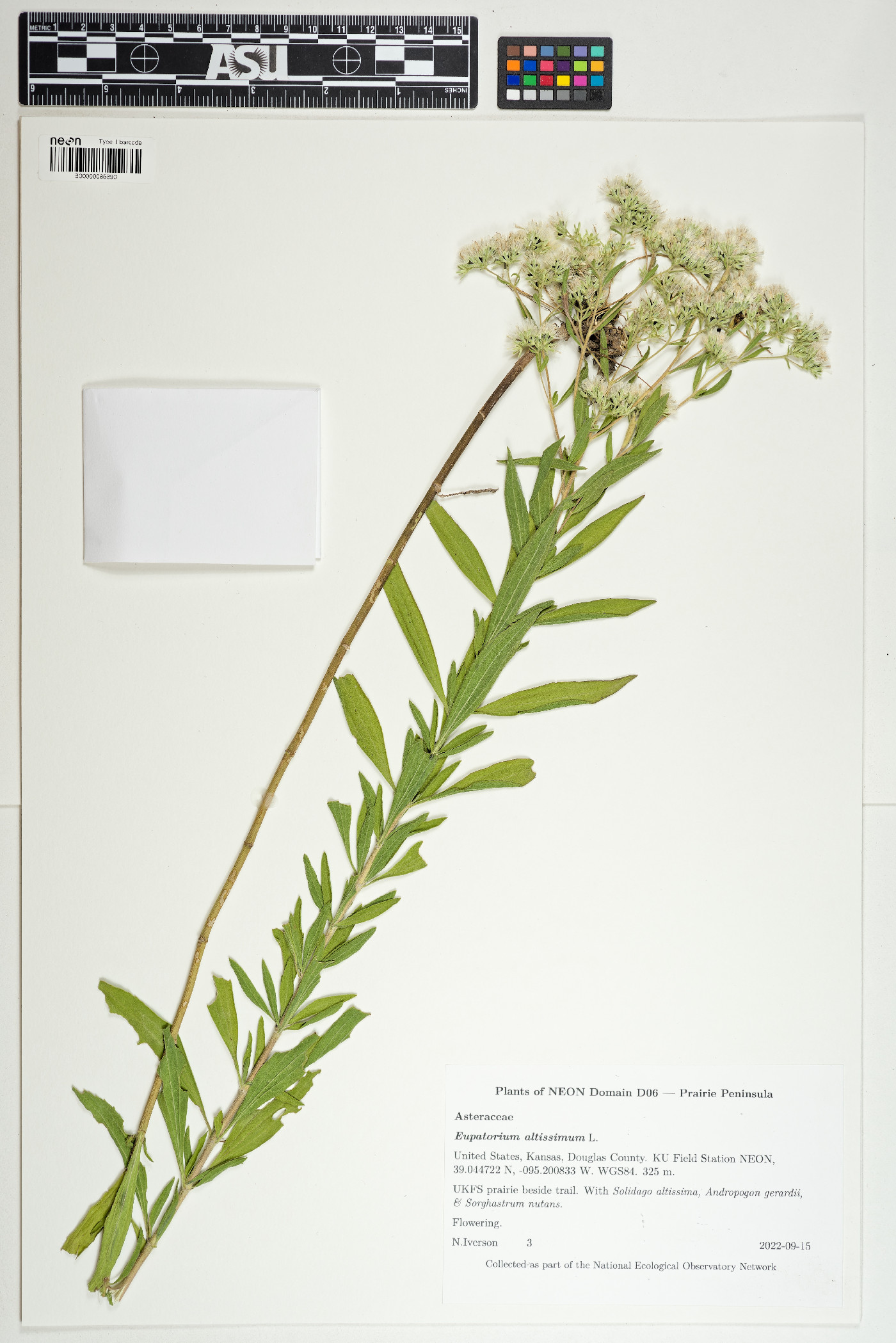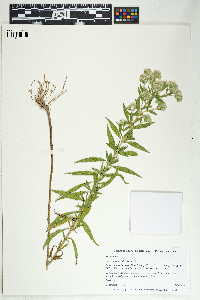|
Family: Asteraceae
tall thoroughwort
[Eupatorium saltuense Fern.] |
Perennials, 50-150+ cm. Stems (from short caudices or stout rhizomes) single, sparsely branched distally, pubescent throughout (nodes sometimes with galls). Leaves usually opposite (nodes often appearing leafy, lateral buds producing 2+ pairs of leaves); sessile or subsessile; blades strongly 3-nerved from bases, lance-elliptic to oblanceolate, 50-120 × 5-20 mm, bases ± cuneate, margins entire proximally, serrate distally, apices acuminate, faces puberulent or villous, gland-dotted. Heads in corymbiform arrays. Phyllaries 8-10 in 2-3 series, oblong, 1-4 × 0.5-1.5 mm, (bases tapered) apices rounded to acute (not mucronate), abaxial faces pubescent throughout. Florets 5; corollas 3-3.5 mm. Cypselae 2-3 mm; pappi of 30-40 bristles 3.5-4 mm. 2n = 20, 30, 40. Flowering Jul-Sep. Clearings, open woods, thickets; 20-400 m; Ont.; Ala., Ark., Conn., Fla., Ga., Ill., Ind., Iowa, Kans., Ky., La., Md., Mass., Mich., Minn., Miss., Mo., Nebr., N.J., N.Y., N.C., Ohio, Okla., Pa., S.C., Tenn., Tex., Va., W.Va., Wis. Eupatorium altissimum occurs in sexual diploid populations in the Ozark region of Missouri and Arkansas, and as apomictic polyploids elsewhere throughout its range. It occurs almost exclusively on limestone soils, where it is often accompanied by (and sometimes misidentified as) Brickellia eupatorioides, which has 10-ribbed cypselae and plumose pappus bristles. Eupatorium altissimum hybridizes with E. serotinum. Plants stout, 8-20 dm; stems arising singly or in pairs from a system of stout, branching rhizomes, softly villous-puberulent, or glabrate below; lvs numerous, opposite, hairy like the stem, strongly trinerved to the base, lance-elliptic, gradually and narrowly acute or acuminate, and gradually narrowed to a sessile or shortly petioliform base, serrate above the middle or subentire, mostly 5-12 cm נ8-30 mm; invol 4.5-7 mm, short-hairy like the herbage, its bracts imbricate, broadly rounded or obtuse; fls 5; cor white, 4-5 mm; 2n=20, 30, 40. Woods, thickets, savannas, glades, and clearings; N.J. and Pa. to s. Minn. and e. Neb., s. to S.C., Miss., and Tex.; casually intr. elsewhere, as in Conn. E. saltuense Fernald, from se. Va., with triplinerved lvs, may reflect hybridization with some other sp. such as E. album.
Gleason, Henry A. & Cronquist, Arthur J. 1991. Manual of vascular plants of northeastern United States and adjacent Canada. lxxv + 910 pp.
©The New York Botanical Garden. All rights reserved. Used by permission. |


